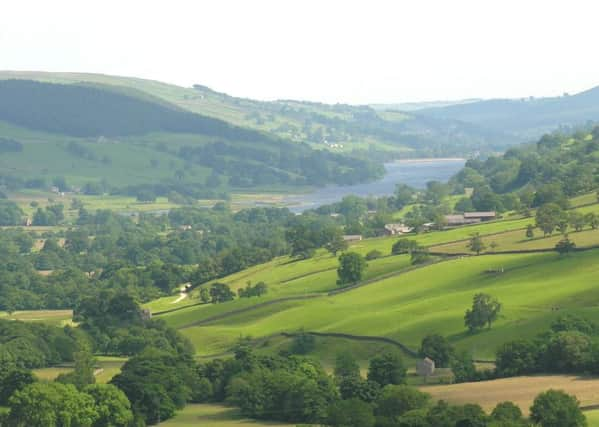Oral plan to capture tales of Upper Nidderdale's moorlands


Human beings have been taming the remote uplands between Pateley Bridge and the dale head since prehistoric settlers built the first barrows and created a stage for their ritualistic practices. Medieval farms, enclosures, lead mines and reservoirs have since left their mark on the countryside.
Now, a new oral history project will explore man’s changing relationship with the landscape over time and it’s likely to find that it evokes a wide variety of emotional responses in different people.
Advertisement
Hide AdAdvertisement
Hide Ad“We want to hear from everybody about their connections with the moorlands,” says Louise Brown, project officer of Historic Nidderdale. “It would be good to talk to a real cross-section of people: current and former gamekeepers, old farmers, even those who have moved away from the dale but have childhood memories.”
Today it is common to associate the moors with wilderness or their rich natural history but not so many people are aware that they have been shaped by human intervention over many millennia - and this continues right up to the present day.
A team of volunteer researchers will interview staff about how management techniques have changed over time. As well as hearing from farmers and landowners, the ‘Moorlands: People, Places, Stories’ project will seek the views of villagers and visitors who may see the countryside primarily as a recreational facility. “Everybody can help to celebrate this upland landscape and bring it to life,” says Louise.
“It’s not just about wildlife or shooting estates - people might be drawn to it artistically or appreciate it in a literary sense. It would be great to involve birdwatchers - a recording of the sound of the moors could be evocative in itself.”
Advertisement
Hide AdAdvertisement
Hide AdLouise is looking to recruit volunteers who are equally passionate about the moorlands to help with the research. Training in interviewing techniques, recording and making transcriptions are offered, plus regular support sessions.
As part of the project - one of many organised by the Upper Nidderdale Landscape Partnership (UNLP), a four-year programme supported by the Heritage Lottery Fund - edited recordings will be uploaded to its website, and highlights from the interviews and associated archive research will be brought together in a booklet, possibly with documents and old photographs provided by participants. The findings will also be showcased at a Moorlands Festival in 2017.
The project will be delivered in partnership with York University and will make use of archive material held by Nidderdale Museum and North Yorkshire County Council.
People who get involved will also have the chance to work with UNLP heritage volunteers, who are investigating the ‘lumps and bumps’ of the upper dale to shed light on how the landscape has evolved over time.
Advertisement
Hide AdAdvertisement
Hide AdWith the help of handheld GPS units that upload information to computer software and aerial photographs, they are identifying cairns, barn foundations and other archaeological features.
Our Farm Heritage is led by the voluntary group Iron Age Nidderdale, which meets at Dacre or Pateley Bridge on most Tuesdays. An event to find out more will be held at the AONB offices from 10.30am-3.30pm on March 12.
“Volunteers are absolutely essential if we want to look after our heritage,” says Louise.
For more details, contact Louise Brown on 01423 712950 or email [email protected] or attend an open meeting at Pateley Bridge Council Chamber on April 16, 10.30am-12.30pm.